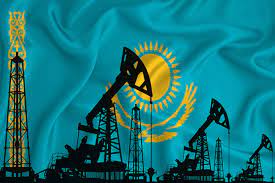Kazakhstan has been one of the “rogue” members of OPEC+, regularly producing more oil than it was supposed to under the bloc’s output cap agreement. Now, it seems that Kazakhstan has done it again, potentially heightening internal tensions within OPEC+.
Reuters reported this week that Kazakhstan’s largest field, Tengiz, had hit record-high production levels since the start of the month. The publication cited unnamed sources for the information, which put Tengiz’s total at 699,999 barrels daily.
The report followed another from a week ago that again cited unnamed sources as saying Kazakhstan’s September total had represented a 10% increase on the August average, once again exceeding the country’s OPEC+ quota—all that after Kazakhstan submitted a plan to offset its production transgressions to the OPEC secretariat in July.
At the time, Kazakhstan admitted to overproducing by 620,000 barrels daily, which, although not as large a number as Iraq’s 1.1 million in extra supply, was still a rather sizable figure that did not make Kazakhstan’s fellow OPEC+ members particularly happy. The excess was supposed to be fully compensated by additional cuts until September next year. Yet judging by how things are going now, if those Reuters reports are accurate, the compensation is failing. And oil prices are stuck. It could get worse, too.
At the end of September, the Financial Times reported, citing yet more unnamed sources, that Saudi Arabia was ready to give up pursuing unofficial oil prices of $100 per barrel of Brent. The move was reportedly a warning shot before the kingdom started bringing back oil production. The FT sources said that it was going to happen on December 1. If it does happen, oil prices will plummet—and all of OPEC would lose money.
This is what has made it so difficult for OPEC and later OPEC+ to make the production cuts work. Some members, such as Iraq and apparently Kazakhstan, are more interested in current market share and exporting as much as they can. Others, such as the Saudis, are, or at least were, more concerned with prices over the longer term, hence the effort to prop these up, even at the expense of market share.
Yet if other members keep overproducing—including top OPEC+ ally Russia—there is little sense in continuing to shoulder most of the burden of lower output and lost market share, which would make Saudi Arabia’s reported decision to start raising output perfectly justifiable. That could further intensify internal tensions in OPEC and OPEC+.
On the other hand, the point of creating the OPEC+ bloc in the first place was to accumulate greater price-setting power on the global crude oil scene by manipulating the balance of supply and demand. If that bloc breaks up, price-setting power would decline with it, and it would be everyone against everyone else—a hardly desirable perspective for any OPEC producer. This should especially true in the age of algorithmic trading that often ignores oil’s fundamentals in favor of other factors such as China’s economy or geopolitics. It appears, however, that some lessons need to be learned the hard way.
Kazakhstan’s oil production in October will likely fall within its quota, Reuters’ sources told the publication. The Kashagan field will be under maintenance, meaning a 400,000-bpd drop in Kazakhstan’s total, bringing the country in line with OPEC expectations. Yet maintenance will be over by December, and Kazakhstan will have to decide what’s more important: market share or continued OPEC+ collaboration. It’s not the only one that has to make that decision. The Saudi barrels are coming, and prices are about to plunge—save a major production outage, of course.

 Iran Energy News Oil, Gas, Petrochemical and Energy Field Specialized Channel
Iran Energy News Oil, Gas, Petrochemical and Energy Field Specialized Channel



